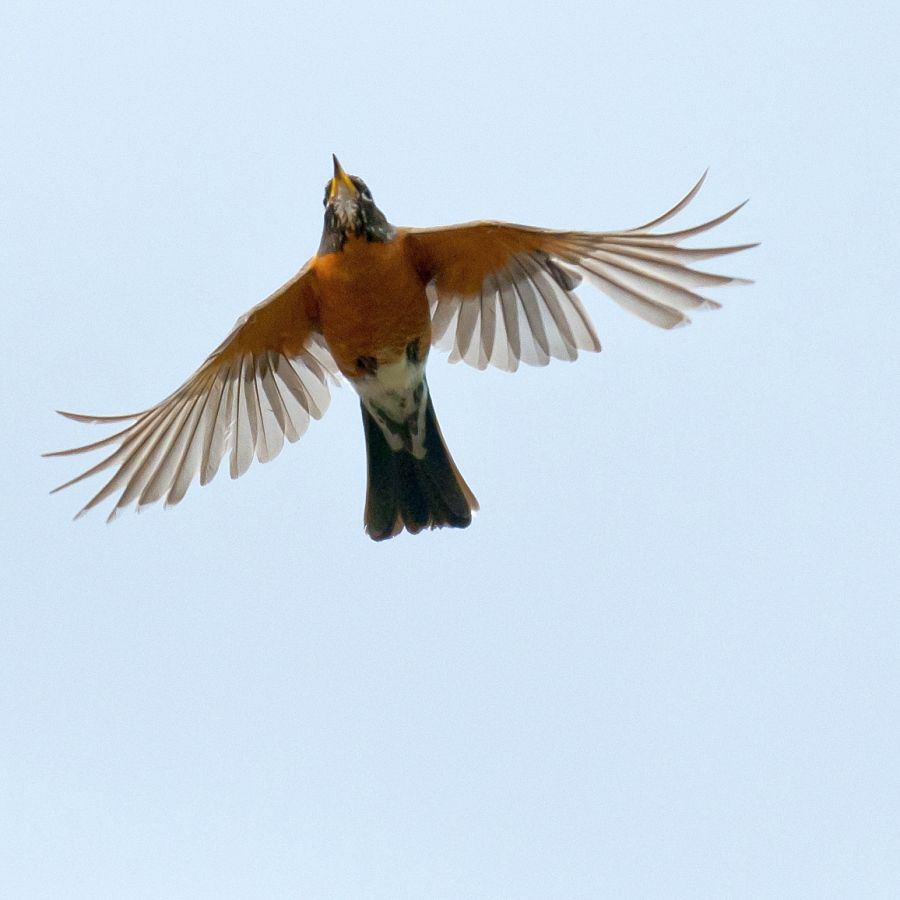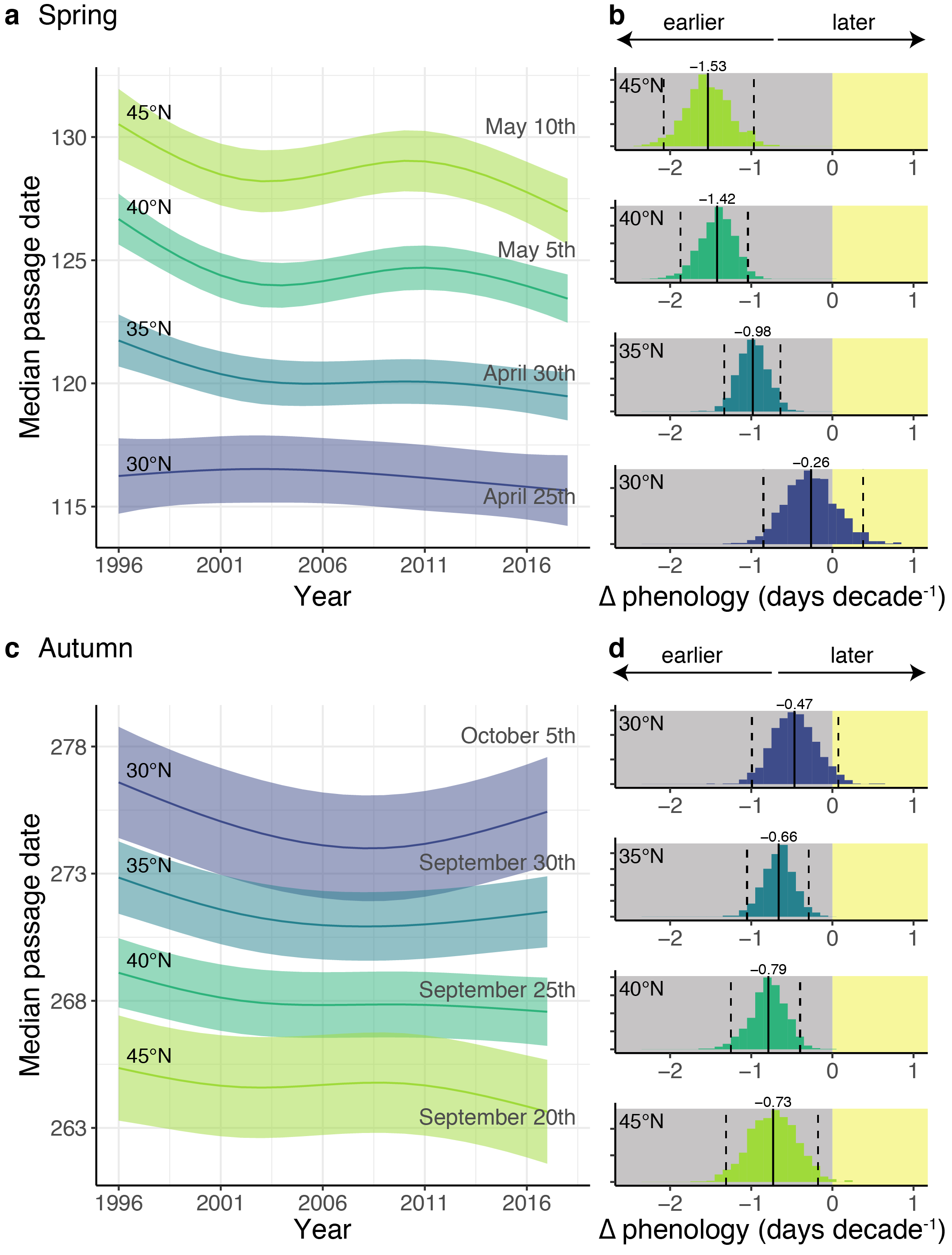
3 September 2020
Here’s something that’s counter-intuitive: As our climate changes we know that North America stays warmer in the fall yet songbirds that migrate at night — cuckoos, flycatchers, warblers, vireos, thrushes, orioles and sparrows — are leaving earlier on fall migration than they used to.
A study led by Kyle Horton published last December in Nature Climate Change found that in the past 24 years the peak of nocturnal migration is earlier in the spring — as expected because it’s warmer — but also earlier in the fall.
At Pittsburgh’s latitude (40oN) the spring peak is 1.4 days earlier, fall is 0.8 days earlier as shown in this graphic embedded from the BirdCast blog about the study: Phenology of nocturnal avian migration has shifted at the continental scale.

You can see this play out in their video of annual migration phenology.
The video illustrates another amazing thing: The Central Flyway — the Great Plains and Mississippi Valley — is a much bigger songbird migration corridor than either coast.
p.s. Downtown Pittsburgh’s GPS location (rounded) is 40.44, -80.00
(photo from Wikimedia Commons, graphic and video embedded from BirdCast blog and Phenology of nocturnal avian migration has shifted at the continental scale; click on the captions to see the originals)